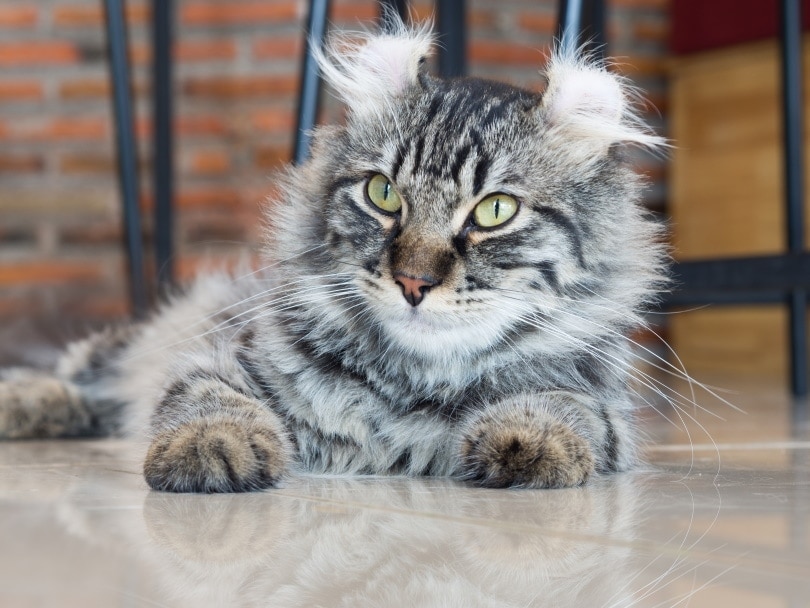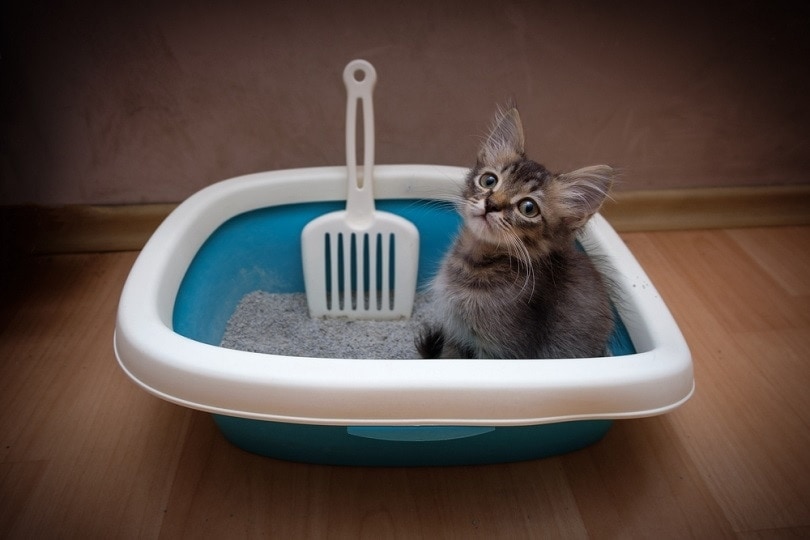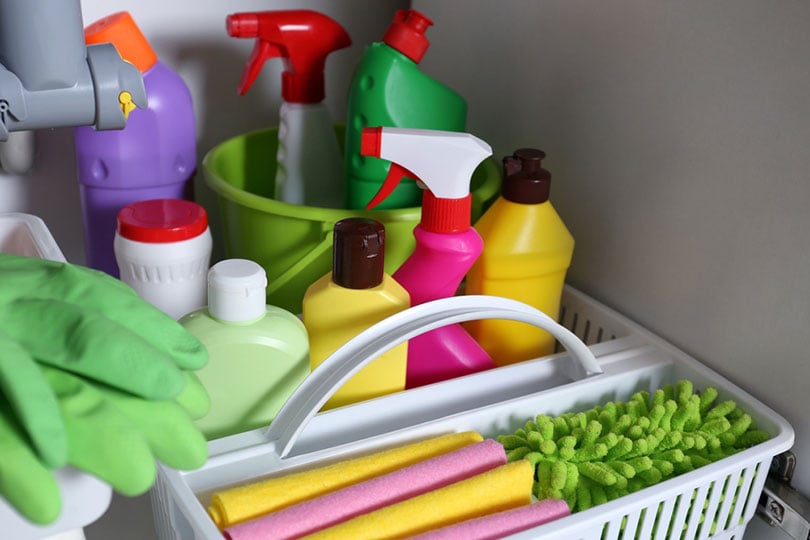Why Are My Cat’s Eyes Watering? – 7 Possible Reasons

Updated on
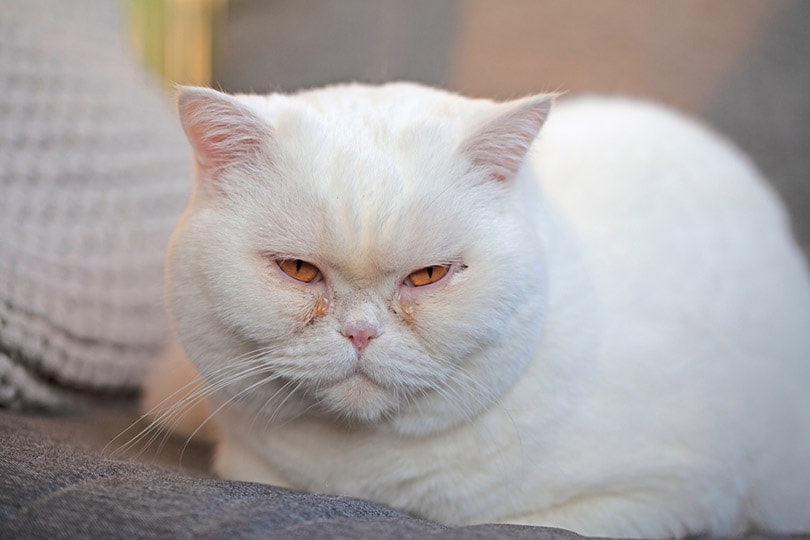
Are your cat’s eyes watering? It can be scary to realize that something is not quite right with your pet—especially if you do not know what is causing it.
First, try to determine if your cat is in pain. There are times when it is normal for a cat’s eyes to water. Just like human eyes, cat eyes will water to clear debris and add moisture. If your cat’s eyes seem to be running more than usual, or your pet seems to be in pain, there could be something wrong.
There are several potential causes for watery eyes in cats. Some are minor and much easier to remedy, while others can be much more serious. If you think your cat’s eyes are unwell, keep reading to learn a couple of reasons that could be causing the condition.
The 7 Reasons Your Cat’s Eyes Are Watering
1. Allergies
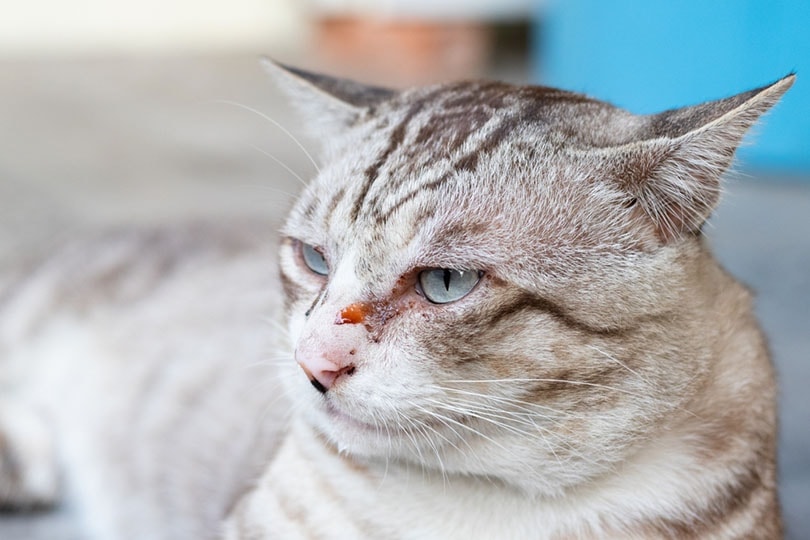
Cats can have allergies of their own, just as humans do. If your cat’s eyes are watering, it’s possible that allergies may be the cause.
Other symptoms of allergies in cats include sneezing or coughing, constant itching at the eyes or ears, ear infections, vomiting, diarrhea, swelling paws, and chewing at the paws.
Environmental factors, food, or fleas are the most common causes of allergies for cats. If there is excessive pollen, mold, or plants in the area, that could be causing your kitty’s problems. Likewise, your cat could be allergic to the food they are eating, or fleas could have bitten them but these are not likely to cause watery eyes.
- If your cat’s eyes have started watering you should take them to the vet for a check over. If allergies are suspected the vet will discuss allergen avoidance and treatment options with you. The allergy symptoms, such as tearing eyes, should alleviate soon after.
2. Foreign Object
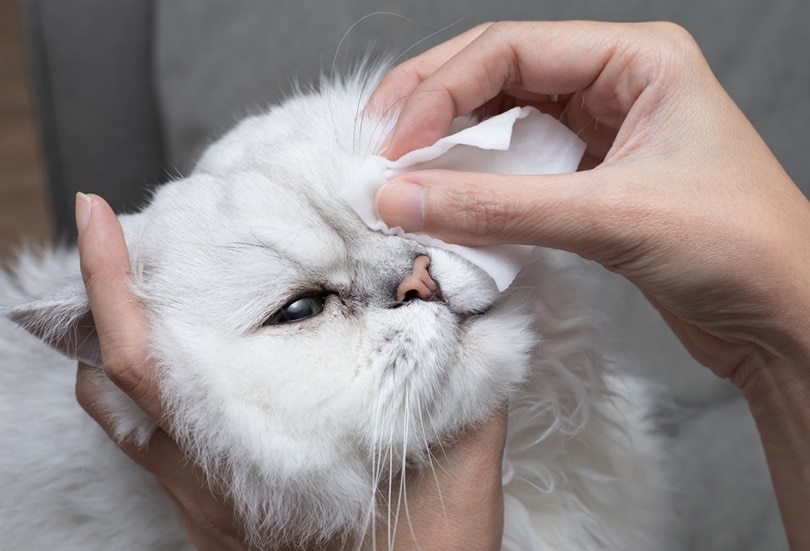
It is also possible that your cat’s eyes are watering because something is inside them. If there is a foreign object under your cat’s eyelid, their eyes will water in an attempt to flush it out.
There is a chance that their eyes watering will not be enough to rid them of whatever has gotten in their eye, so pay close attention to how long their eyes water and if other symptoms show up.
Some signs that your cat has something in their eye that they can’t dislodge include squinting, pawing at their eyes, eyelid and/or eyeball swelling, and heightened sensitivity to light.
- A vet can evaluate your cat to determine how serious the issue is. Depending on the foreign object’s depth, the care will either be a flush of the eyes or removal with forceps. The eyes will likely be checked for any complications from the foreign object such as ulceration.
3. Glaucoma
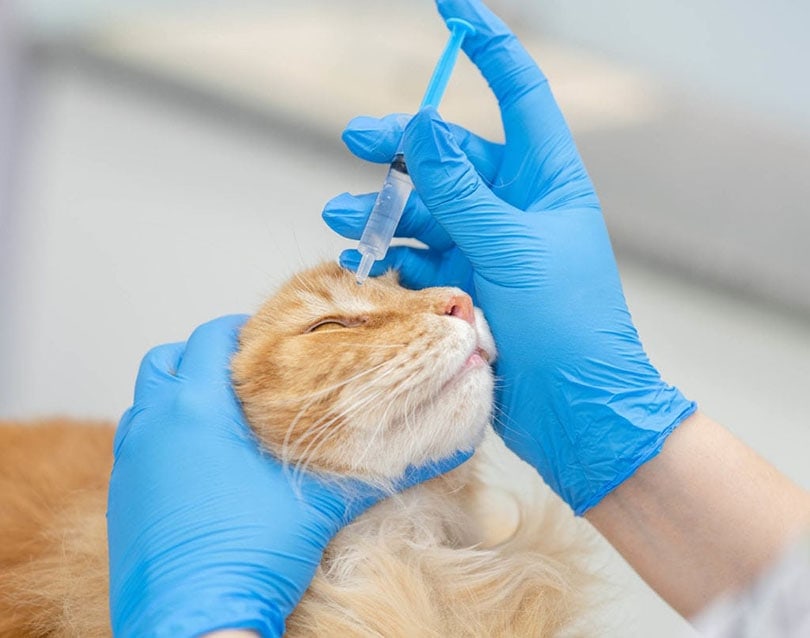
Glaucoma is a severe and concerning condition. If you think that your cat may have it, reach out to your vet immediately.
When fluid pressure within the eye is increased, glaucoma develops. Insufficient fluid drainage in the eye builds up pressure, leading to damage to the retina and optic nerve. This can cause serious issues, including pain and bulging of the eye, cloudiness or discoloration of the cornea, dilated pupils, and sudden onset blindness.
- It is necessary to see a vet quickly for treatment. Depending on the severity of the case, your vet may prescribe medications to soothe the pain and support the drainage of the eye, or referral to a veterinary ophthalmologist may be required.
- It will be necessary to have regular appointments scheduled with your vet so that your cat’s condition can be monitored as they progress through treatment.
4. Conjunctivitis
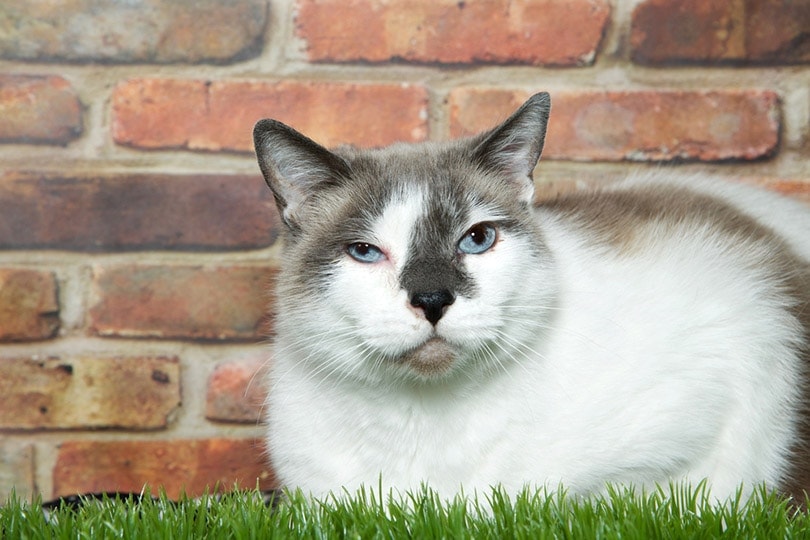
Conjunctivitis occurs when the membrane that lines the inside of the eyelid is inflamed. It is most commonly caused by viruses or bacterial infections. This is an extremely common eye disorder among cats, and despite how it sounds, it is not a grave condition. However, if left untreated, it could lead to more concerning conditions.
Other symptoms include squinting, constant blinking, swelling of the eyelid, and possibly a colored discharge from the eye.
- Oftentimes, conjunctivitis can clear up on its own. If the condition is present for a few days or your cat is in significant discomfort, take it to the vet to ensure no other underlying issues. Your vet may recommend eye drops or ointments if the case is more severe.
5. Viral infection / bacterial infection
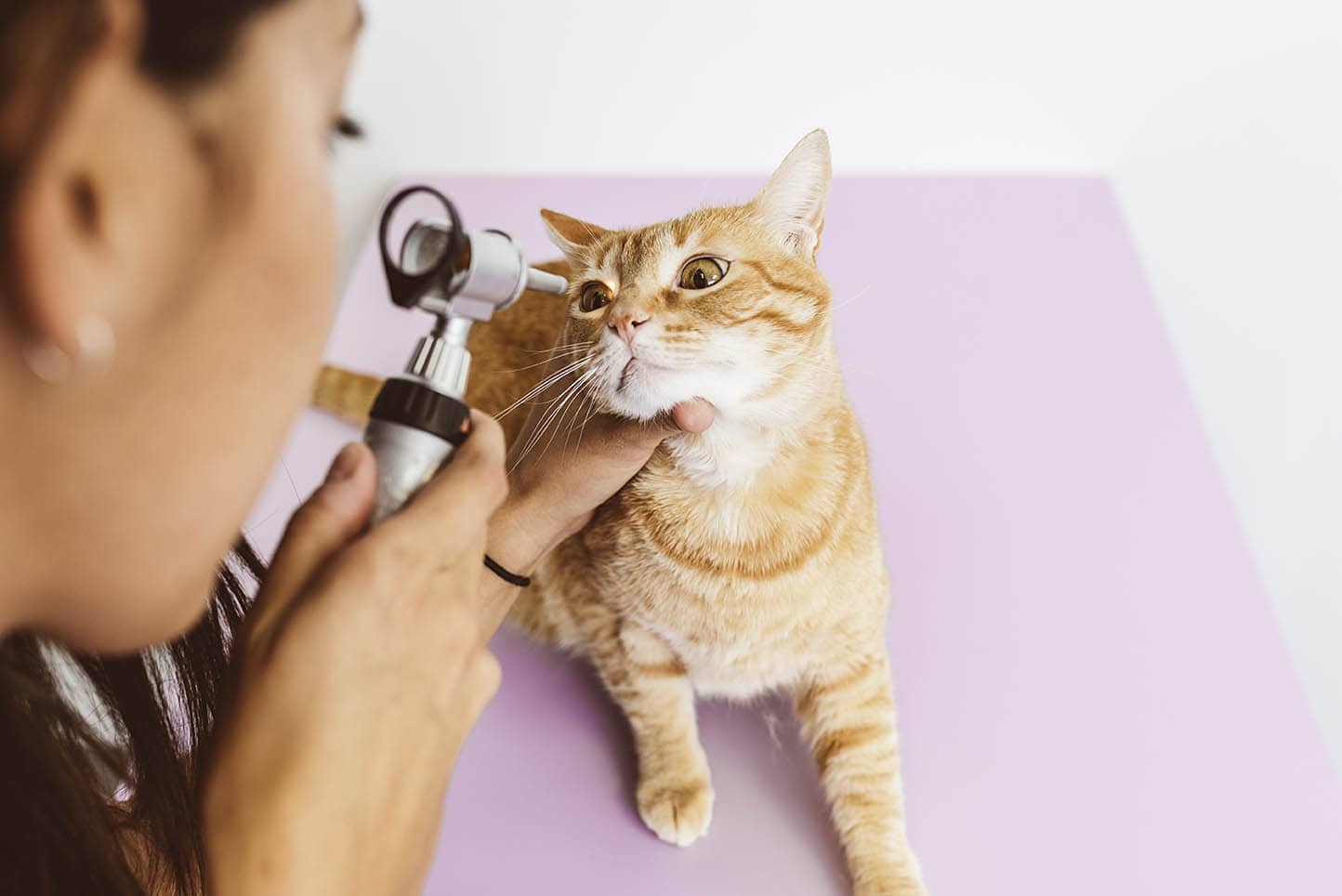
An infection could be to blame for your cat’s watery eyes. It is not uncommon for cats to be afflicted with either a viral or a bacterial respiratory infection, and since they can become rather unwell, it is important to reach out to a vet as soon as possible.
Signs of a possible respiratory infection include inflamed eyelids, sneezing, red eyes, constant blinking and pawing at the eyes, or a discharge coming from the eyes that is either clear, greenish, or yellowish. Reduced appetite and nasal discharge or congestion are common symptoms of cat flu.
Since respiratory infections are contagious, your cat may be infected if they have recently encountered another cat.
- It is essential to take your kitty to the vet to make an appropriate diagnosis since treatment depends on accurate information. Your vet will likely prescribe eye drops or gels, but they may provide oral supplements or medications depending on the type of infection. Vaccination against cat flu will help reduce the risk of your cat becoming ill in the first place.
6. Blocked lacrimal duct
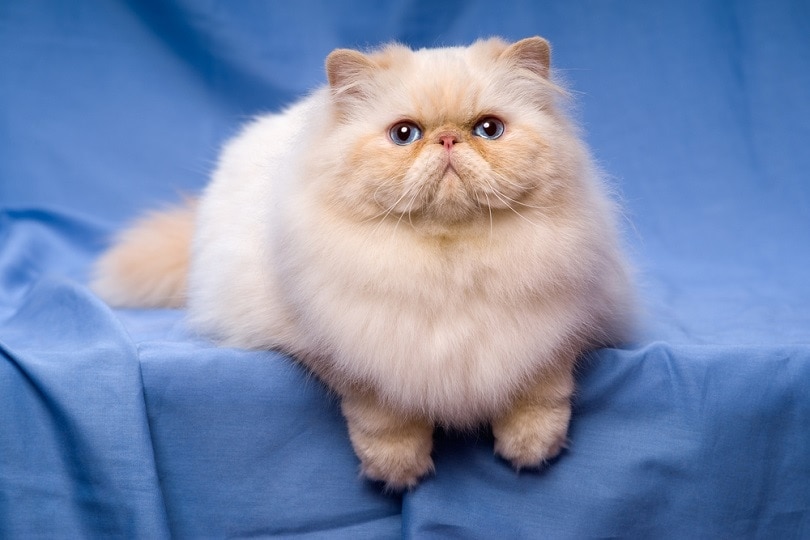
The lacrimal duct is a crucial part of drainage for a cat’s eyes and nose. When this duct is blocked, it can lead to watering eyes. The duct could be blocked by a number of things: inflammation, scaring, or even a hereditary defect of the duct’s formation.
Beyond watery eyes, another symptom of a blocked lacrimal duct is often reddish-colored tears. If an infection develops, redness, itching, or swelling of the face may occur. In more serious cases, bacteria may begin to grow around the eyes due to the wetness of the fur. Your cat’s face may even start to smell bad due to this.
- If the blockage is caused by inflammation, then medications will be prescribed to combat it. However, there may be instances where surgery is required, especially if the duct formed improperly or there is something that is obstructing it.
7. Eye Ulcer

It is possible that your cat may have a corneal ulcer. A corneal ulcer is essentially an abrasion of multiple layers of the cornea to create an ulcer. This may be due to trauma, infection or eye problems such as ingrowing eyelashes.
The cornea is the surface of the eye and is made up of three layers: the epithelium, the stroma, and Descemet’s membrane. A corneal ulcer is formed when the outer layer (the epithelium) and the middle layer (the stroma) have been penetrated. If the ulcer continues to grow and breaches the Descemet’s membrane, the eye could collapse and cause irreversible damage.
Corneal ulcers are incredibly painful. If your cat has one, it will be evident by their body language. They will rub their eyes with a paw or even on furniture or floors. Other signs are squinting, constant blinking, and discharge from the eyes.
- If medical management alone does not help the ulcer resolve then surgery will most likely be needed to heal the ulcer. Your vet will have recommendations for the best procedure or combination of treatments to get your cat feeling better in no time.
Conclusion
These are some of the primary reasons your cat’s eyes may be watering. If you think your cat is displaying the additional symptoms of any of these conditions, pay close attention to your pet and its state of well-being. If these issues persist for two days or your feline friend seems to be in pain, make a trip to the vet immediately.
See also:
- 3 Most Common Cat Allergies & Their Signs: Vet-Reviewed Facts
- Can You Build Up an Immunity to Cat Allergies? What You Need to Know
Featured Image Credit: Repelsteeltje, Shutterstock


